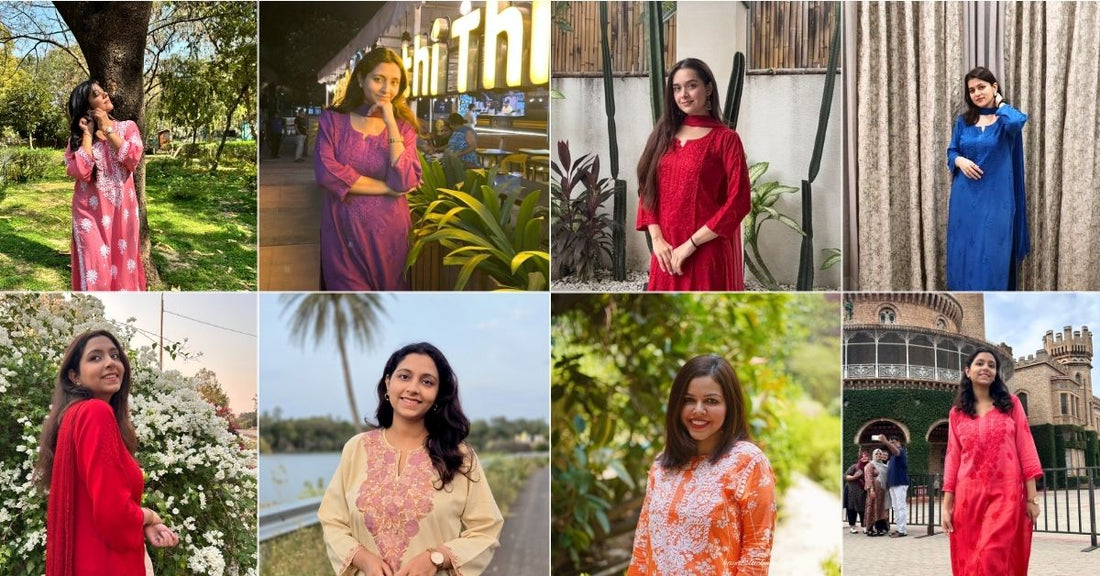
From Royal Courts to Global Runways: The Enduring Allure of Chikankari
Share
A Craft with a Soul
Few art forms embody elegance, patience, and heritage as beautifully as Chikankari embroidery. What began centuries ago in the royal courts of Lucknow has today become a global fashion statement—gracing everything from breezy cotton kurtis to couture gowns on international runways.
But what is it about Chikankari that continues to captivate the world? Let’s journey from its regal beginnings to its modern-day relevance.
Chikankari in the Royal Courts of Lucknow
- Origins: Believed to have been introduced during the Mughal era, Chikankari flourished under the patronage of Empress Noor Jahan.
- Technique: Artisans created delicate patterns on fine muslin with nothing but a needle, thread, and immense patience.
- Symbol of Prestige: Worn by royals and nobility, Chikankari garments were a sign of refinement, grace, and wealth.
- The art became synonymous with Lucknow’s cultural identity, earning the city its title as the cradle of Chikankari.
The Timeless Craftsmanship
- Unlike machine embroidery, authentic Chikankari is entirely hand-stitched.
- It involves over 30 intricate stitches, including taipchi, phanda, murri, and jali.
- Each piece may take days—or even weeks—to complete.
- The result: light, breathable fabrics adorned with embroidery that looks delicate but endures for generations.
- This dedication to detail explains why Chikankari is not just clothing—it’s a wearable piece of heritage.
Chikankari on Global Runways
- From Sabyasachi Mukherjee in India to international designers showcasing in Paris and Milan, Chikankari has crossed borders:
- Celebrities and fashion icons now wear Lucknowi kurtis, sarees, and gowns at red carpet events.
- Its minimalist elegance appeals to modern global sensibilities of slow fashion and sustainability.
- Western silhouettes—like maxi dresses, tunics, and even bridal gowns—are being reimagined with Chikankari handwork.
Why Chikankari Still Matters Today
- Cultural Connection – Wearing Chikankari is like carrying a piece of Indian history.
- Sustainability – It supports handloom artisans and promotes eco-conscious, slow fashion.
- Versatility – From everyday office wear to festive occasions, Chikankari works everywhere.
- Global Appeal – Its understated beauty resonates across cultures.
Styling Tips for Modern Wardrobes
- Pair a Mul Mul Chikankari kurti with palazzos for effortless summer elegance.
- Accessorize with oxidized silver jewelry for a bohemian fusion look.
- Choose pastel shades for day wear, and embellished Chikankari in georgette or silk for weddings and festive evenings.
A Legacy Woven in Thread
Chikankari has survived dynasties, colonial rule, and changing fashion trends. Today, it stands not just as a symbol of Lucknow’s heritage, but as a timeless expression of elegance embraced worldwide.
At Hayat’s Lucknowi, we are proud to bring this legacy from the hands of artisans in Lucknow to your wardrobe—keeping alive a tradition that is both royal and relevant.
Explore our collection of hand-embroidered Chikankari kurtis and be part of this enduring story.
